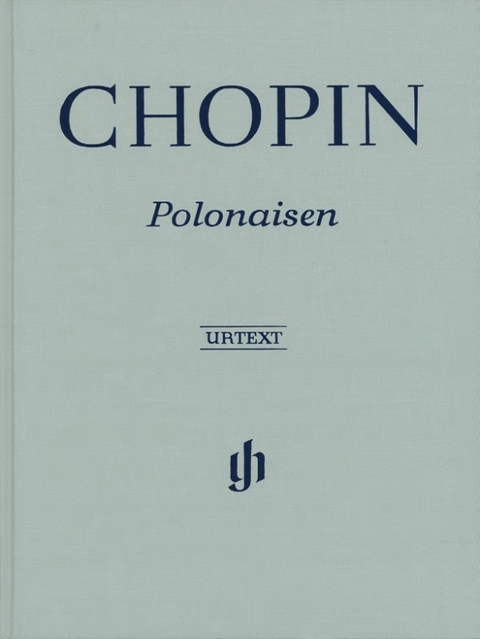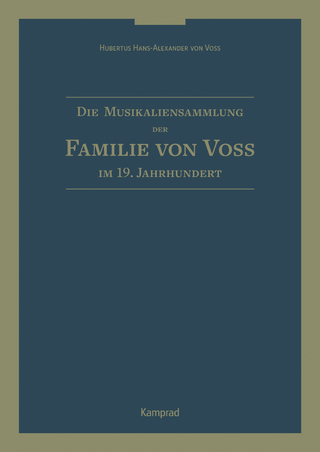
Frédéric Chopin - Polonaisen
Besetzung: Klavier zu zwei Händen
Seiten
2000
Henle, Günter (Verlag)
979-0-2018-0218-3 (ISMN)
Henle, Günter (Verlag)
979-0-2018-0218-3 (ISMN)
Ausführlicher Kritischer Bericht; (nicht in der Druckausgabe enthalten); zum kostenlosen Download
The polonaise made its first appearances in stylized dance music in the late 16th century. With his own polonaises, Chopin also declared his allegiance to his native Poland. In a way, the genre had fascinated him since his childhood. His earliest printed work was a Polonaise (KK IIa no. 1 in g minor), which he had written at the age of seven. The first three posthumously published Polonaises op. 71 as well as KK IVa nos. 1–3, 5 and 8 are juvenilia from the Warsaw years. The mature works begin with the seven great Polonaises op. 26 nos. 1 and 2, op. 40 nos. 1 and 2, op. 44 and 53, and, above all, the Polonaise-Fantaisie op. 61 of 1845/46, Chopin’s last great piano work. With their mixture of festiveness and refinement, of power and suppleness, of heroic pathos and graceful charm, they all testify to the inimitable artistry of this great composer. La polonaise apparaît dans la musique savante dès la fin du 16e siècle en tant que danse styli-sée. Chopin commença à se consacrer à ce genre quasiment dès l’enfance, rendant ainsi égale-ment hommage à son pays natal. En effet, son œuvre imprimée la plus ancienne est une polo-naise (KK IIa no 1 en sol mineur) composée à l’âge de sept ans. De même les trois polonaises op. 71 ainsi que KK IVa no 1 à 3, 5 et 8 publiées à titre posthume sont des œuvres de jeunesse datant de la période où il vivait à Varsovie. Les sept grandes polonaises op. 26 no 1 et 2, op. 40 no 1 et 2, op. 44 et 53, et en particulier la Polonaise-Fantaisie op. 61 de 1845/46, qui est aussi la dernière grande œuvre pour piano de Chopin, sont des œuvres de la maturité. Dans leur mélange de solennité et d’élégance, de force et de douceur, de pathos héroïque et d’humeur délicate, elles sont toutes les témoins du grand art de ce compositeur. Die Polonaise taucht als stilisierter Tanz in der Kunstmusik bereits seit dem Ende des 16. Jahrhunderts auf. Chopin legte mit seinen Polonaisen gleichzeitig ein Bekenntnis zu seinem Heimatland Polen ab. Die Gattung beschäftigte ihn gewissermaßen von Kindheit an. Sein frühestes gedrucktes Werk war eine Polonaise (KK IIa Nr. 1 in g-moll), die er mit sieben Jahren komponiert hatte. Auch die erst postum veröffentlichten drei Polonaisen op. 71 sowie KK IVa Nr. 1–3, 5 und 8 sind Jugendwerke aus der Warschauer Zeit. Reife Werke sind dann die sieben großen Polonaisen Op. 26 Nr. 1 und 2, Op. 40 Nr. 1 und 2, Op. 44 und 53 und vor allem die Polonaise-Fantaisie op. 61 von 1845/46, Chopins letzte große Klavierkomposition. In ihrer Mischung aus Festlichkeit und Eleganz, aus Kraft und Geschmeidigkeit, aus heroischem Pathos und lieblicher Anmut sind sie alle Zeugen der großen Kunst dieses Komponisten.
The polonaise made its first appearances in stylized dance music in the late 16th century. With his own polonaises, Chopin also declared his allegiance to his native Poland. In a way, the genre had fascinated him since his childhood. His earliest printed work was a Polonaise (KK IIa no. 1 in g minor), which he had written at the age of seven. The first three posthumously published Polonaises op. 71 as well as KK IVa nos. 1–3, 5 and 8 are juvenilia from the Warsaw years. The mature works begin with the seven great Polonaises op. 26 nos. 1 and 2, op. 40 nos. 1 and 2, op. 44 and 53, and, above all, the Polonaise-Fantaisie op. 61 of 1845/46, Chopin’s last great piano work. With their mixture of festiveness and refinement, of power and suppleness, of heroic pathos and graceful charm, they all testify to the inimitable artistry of this great composer. La polonaise apparaît dans la musique savante dès la fin du 16e siècle en tant que danse styli-sée. Chopin commença à se consacrer à ce genre quasiment dès l’enfance, rendant ainsi égale-ment hommage à son pays natal. En effet, son œuvre imprimée la plus ancienne est une polo-naise (KK IIa no 1 en sol mineur) composée à l’âge de sept ans. De même les trois polonaises op. 71 ainsi que KK IVa no 1 à 3, 5 et 8 publiées à titre posthume sont des œuvres de jeunesse datant de la période où il vivait à Varsovie. Les sept grandes polonaises op. 26 no 1 et 2, op. 40 no 1 et 2, op. 44 et 53, et en particulier la Polonaise-Fantaisie op. 61 de 1845/46, qui est aussi la dernière grande œuvre pour piano de Chopin, sont des œuvres de la maturité. Dans leur mélange de solennité et d’élégance, de force et de douceur, de pathos héroïque et d’humeur délicate, elles sont toutes les témoins du grand art de ce compositeur. Die Polonaise taucht als stilisierter Tanz in der Kunstmusik bereits seit dem Ende des 16. Jahrhunderts auf. Chopin legte mit seinen Polonaisen gleichzeitig ein Bekenntnis zu seinem Heimatland Polen ab. Die Gattung beschäftigte ihn gewissermaßen von Kindheit an. Sein frühestes gedrucktes Werk war eine Polonaise (KK IIa Nr. 1 in g-moll), die er mit sieben Jahren komponiert hatte. Auch die erst postum veröffentlichten drei Polonaisen op. 71 sowie KK IVa Nr. 1–3, 5 und 8 sind Jugendwerke aus der Warschauer Zeit. Reife Werke sind dann die sieben großen Polonaisen Op. 26 Nr. 1 und 2, Op. 40 Nr. 1 und 2, Op. 44 und 53 und vor allem die Polonaise-Fantaisie op. 61 von 1845/46, Chopins letzte große Klavierkomposition. In ihrer Mischung aus Festlichkeit und Eleganz, aus Kraft und Geschmeidigkeit, aus heroischem Pathos und lieblicher Anmut sind sie alle Zeugen der großen Kunst dieses Komponisten.
Polonaise (Dramatique) cis-moll op. 26,1
Polonaise es-moll op. 26,2
Polonaise (Militaire) A-dur op. 40,1
Polonaise c-moll op. 40,2
Polonaise fis-moll op. 44
Polonaise As-dur op. 53
Polonaise (Polonaise-Fantaisie) As-dur op. 61
Polonaise d-moll op. 71,1
Polonaise B-dur op. 71,2
Polonaise (Fassung nach der Eigenschrift) f-moll op. 71,3
Polonaise (Fassung nach Fontana) f-moll op. 71,3
Polonaise g-moll KK IIa,1
Polonaise B-dur KK IVa,1
Polonaise As-dur KK IVa,2
Polonaise gis-moll KK IVa,3
Polonaise b-moll KK IVa,5
Polonaise Ges-dur KK IVa,8
| Erscheinungsdatum | 15.04.2022 |
|---|---|
| Reihe/Serie | G. Henle Urtext-Ausgabe |
| Mitarbeit |
Technischer Herausgeber: Hans-Martin Theopold |
| Zusatzinfo | ?Ausführlicher Kritischer Bericht (nicht in der Druckausgabe enthalten) zum kostenlosen Download |
| Verlagsort | München |
| Sprache | englisch; französisch; deutsch |
| Maße | 235 x 310 mm |
| Gewicht | 837 g |
| Themenwelt | Kunst / Musik / Theater ► Musik ► Musikalien |
| Kunst / Musik / Theater ► Musik ► Musikgeschichte | |
| Schlagworte | henle • Klassik • Musik • Musikalien • Noten • Urtext |
| Zustand | Neuware |
| Haben Sie eine Frage zum Produkt? |
Mehr entdecken
aus dem Bereich
aus dem Bereich
Buch | Softcover (2020)
Bosworth Edition - Hal Leonard Europe GmbH (Verlag)
CHF 25,15
Buch | Hardcover (2024)
E Reinhold (Verlag)
CHF 41,70


